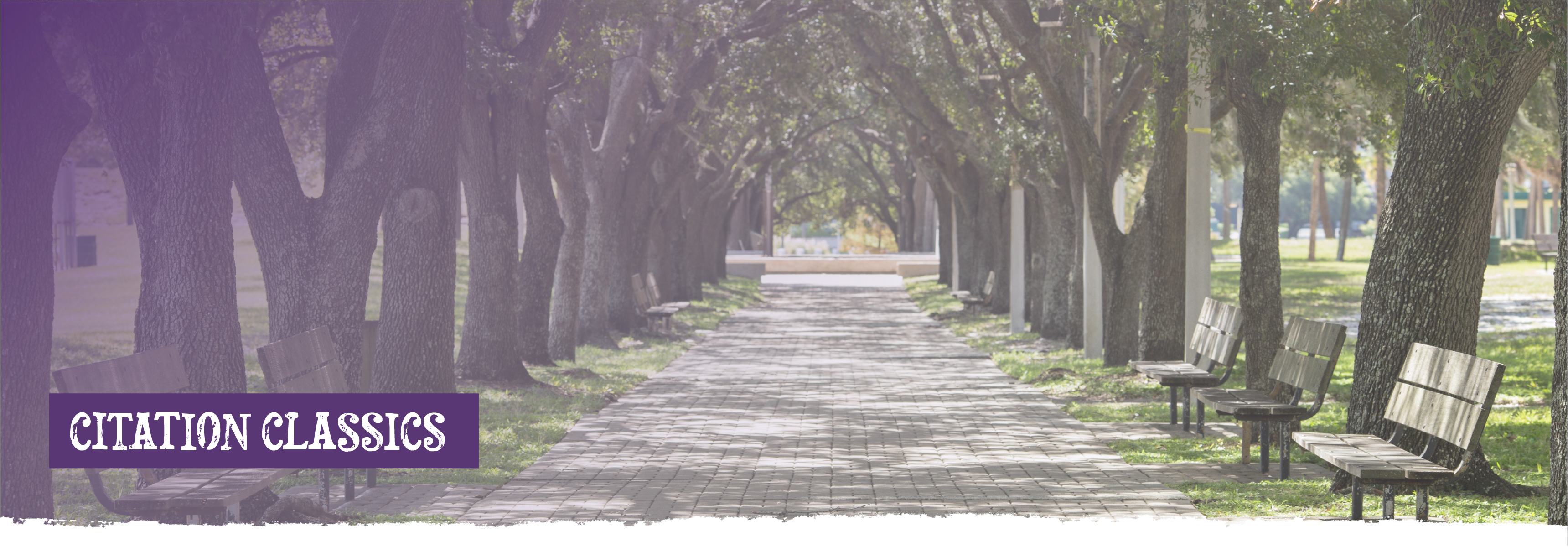About the Citation Classics
Citation Classics is a new content series developed by the UF/IFAS Research Dean's office to highlight faculty-authored publications that have made substantial impacts in the scientific community and the world. This page will be updated throughout the next several months with additional, highly cited papers.
If you would like to nominate a paper for recognition, please email Hope Miller at miller.hmarie@ufl.edu.
Featured Papers
Tuskan G.A. et al (2006).The genome of black cottonwood, Populus trichocarpa (Torr. & Gray). Science, 313.5793:1596-1604

This Citation Classic has three UF/IFAS faculty coauthors, who contributed data and analysis for two of the figures in the paper. Shortly after its publication, Matias Kirst, Gary Peter and John Davis established the Forest Genomics Laboratory in the Genetics Institute, housed in the newly constructed Cancer/Genetics Research Complex. Their most highly-cited paper titled “The genome of black cottonwood, Populus trichocarpa (Torr. & Gray)” was published in Science in 2006 and has been cited 4,000 times. At the time, Populus was recognized as an important bioenergy species, but the paper launched Populus into the forefront as a model species for genomic dissection of complex traits in forest trees, and in plants in general. It also set the stage for many subsequent studies to explore developmental genetics, evolutionary genetics, and plant adaptation to the environment.
To read the full article, click here.
Schwartz S.H. et al (1997). Specific oxidative cleavage of carotenoids by VP14 of maize. Science, 276.5320:1872-1874

In 1985, Donald McCarty was a post-doctoral research associate at the University of Florida, and since 1997, he has been serving as a professor in the Horticultural Sciences Department. Throughout his career, his research has had incredible impacts which are partly demonstrated through his contributions to more than 150 peer-reviewed journal articles with more than 11,000 citations garned from that body of work.
His most highly cited article, published in Science and titled "Specific oxidative cleavage of carotenoids by VP14 of maize" has been cited more than 800 times! The article explains that as the plant growth regulator abscisic acid (ABA) biosynthesizes, oxidative cleavage is the first committed reaction and is believed to be the key regulatory step. However, a new ABA-deficient mutant of maize has been identified and the corresponding gene, Vp14, has been cloned.
To read the full report and learn more about the findings, click here.
To learn more about Dr. McCarty's active research program and to contact him, click here.
Koch K.E. (1996). Carbohydrate-modulated gene expression in plants. Annual Review of Plant Biology, 47.1:509-540

Karen Koch joined the UF/IFAS Horticultural Sciences Department in 1981, and since then, has authored and contributed to more than 150 articles in peer-reviewed journals. Her research focus is plant physiology and genetics with a focus on sugar metabolism, sensing and partitioning.
Her most cited article, "Carbohydrate-modulated gene expression in plants" published in the Annual Review of Plant Biology in 1996, reviews plant gene expressions from a molecular level to a whole-plant level. The paper considers emerging models for sensing and transducing carboydrate signals to responsive genes. She is the sole author of this article that has been cited almost 2,000 times!
Dr. Koch's scientific contributions to her field are vast as shown through her full list of publications, and she is an asset of the UF/IFAS enterprise.
To read the full paper, click here.
Jones J.W. et al (2003). The DSSAT cropping system model. European Journal of Agronomy, 18:235-265
In 1983, UF/IFAS Agricultural and Biological Engineering researcher James W. Jones was asked to contribute to a new USAID initiative on the use of agricultural systems to determine how to transfer research results from one data set containing weather, soil, and socioeconomic conditions to others with differing conditions. He collaborated with soil scientists, agronomists, statisticians, plant pathologists, and economists to develop the Decision Support System for Agrotechnology Transfer (DSSAT). Since then, the DSSAT has expanded from a basic system with only four crops to a dynamic model with 42 crop species (version 4.6).
This work was published in 2003 by Dr. Jones and UF/IFAS researchers Gerrit Hoogenboom and Kenneth Boote, along with contributing authors from other universities. The paper titled “The DSSAT cropping system model” was published in the European Journal of Agronomy and has been cited more than 1,700 times!
The paper explains how the DSSAT was re-designed in a modular structure where components separate along scientific discipline lines and are structured to allow easy replacement or addition of models. It is also designed for incorporation into various application packages. In this paper, the authors describe the benefits of the new design.
To read the full paper, click here.
Conley D.J. et al (2009). Controlling eutrophication: nitrogen and phosphorus. Science, 323:1014-1015
The late Karl E Havens published more than 150 peer-reviewed journal articles throughout his 35-year career in aquatic research. His research specialty was the response of aquatic ecosystems to natural and human-caused stressors, including hurricanes, drought, climate change, eutrophication, invasive species and toxic materials.
In 2004, he joined the UF/IFAS enterprise as the Chair of the School of Forest Resources and Conservation's Fisheries and Aquatic Sciences program. Four years later, he became the Director of the Florida Sea Grant College program.
A paper he co-authored and published in Science titled "Controlling eutrophication: nitrogen and phosphorus" had been cited more than 2,000 times! According to Google Scholar metrics, this paper gains traction each year with the number of citations per year continuing to grow, showing its relevance and importance to the scientific community.
Dr. Havens, a professor in the UF/IFAS School of Forest Resources and Conservation and the Director of Florida Sea Grant, passed away in April 2019. This paper is just one example of the tremendous body of work that he left behind for the benefit of all.
To read the abstract, click here.

